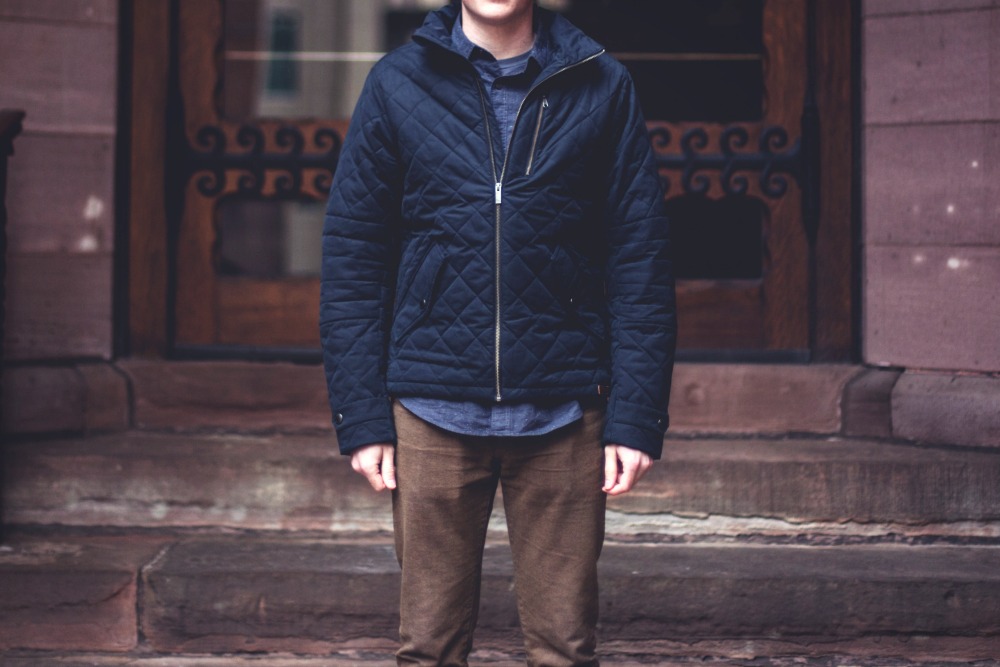When I first experienced depersonalization, ten years ago, I knew nothing about it. I’d never even heard of the condition. Not in books, not in films, not even in my years of having a passing interest in psychology and spiritual practice.
When I began to experience it chronically and consistently, as a result of an intense panic attack (the first I’d ever had), it felt like I’d been shoved headfirst into some sort of alternate reality. The whole world seemed different, changed. I didn’t want to eat, drink, socialize. All I could do was focus intensely on this absolutely bizarre feeling that simply wouldn’t dissipate.
I remember lying on my bed and thinking, “What have I done to myself?” As if I had personally brought the condition on or done something to deserve it.
What is depersonalization?
Depersonalization is an anxiety-triggered feeling of being cut off from reality. It manifests in various ways but the most common symptoms are:
- feeling as though you are in some sort of dream state,
- feeling as though you or the people around you are not real,
- feeling as though you have become detached from the world;
- feeling as though you are watching your thoughts, feelings and physical self, from outside of yourself;
- feeling as though you are not in control of your speech or your physical movements;
Most people experience it briefly at one point or another in their lives, but for some it can become a chronic, terrifying and ongoing affliction.
My own experience of depersonalization.
When I tried to describe my symptoms to my family members, they were at a loss. Attempting to verbally define what I was feeling (being stuck behind a pane of glass, unsure if I was awake or dreaming) usually resulted in a conversation so outlandish that most people simply didn’t know how to react. To others I looked like I was ok, so surely these weird thoughts were surely a passing phase.
But I was far from being ok.
In fact, those few months before I started making my first tentative steps towards recovery were the toughest thing I’ve ever had to go through. At one point, with my mind frantically searching for answers for what I was experiencing, I began to seriously question if it was possible that I had actually died on that first night of the panic attack, and that I was now in some sort of purgatorial state. Maybe I’d suffered a psychotic break? Would I ever be the same? It was terrifying to the point of incapacitation.
It was only through weeks and months of researching on the internet that, via a process of elimination and documentation, I was able to start to figure out what was happening to me.
And yet when I did find the websites that explained what I was experiencing, they were of almost no comfort whatsoever. As is standard for conditions on the anxiety spectrum, the forums were populated almost entirely by people who had not yet recovered from DP, but were actively exacerbating the condition by logging on to these sites every day in order to document their feelings. Some of these people had had the condition for decades. Why would my case be any different?
It seemed that no matter where I looked, I could either find no information on the condition at all, or terrifying portents of a future with no recovery on the horizon. It was profoundly depressing and upsetting.
This might seem like a perfect storm of circumstances, but the fact is that this is very similar what most people go through when they develop depersonalization. It is one of the most common conditions in the world almost everyone experiences it briefly at one time or another, and for one in fifty people (up to 2% of the population) it becomes chronic and unremitting.
And yet, the fact that it’s so common is absolutely not reflected in people’s’ general awareness of it. If you experience flu symptoms, you know that you’re getting a flu. If you sprain your ankle, you know what it is and how to treat it.
Even if it’s something more subjective, like a panic attack, people tend to recognise (either immediately or soon after) what they have experienced. This is because we have a cultural awareness of these things. We know them. We recognize them.
We don’t, however, recognize depersonalization. Back when I spoke my local doctor about what I was experiencing, he looked at me blankly and kept asking me if I was feeling ‘depressed’, put me on medication and recommended that I get more daily exercise. In fact, it wasn’t until 6 months later when I was seeing a psychologist that I was even able to discuss depersonalization with someone who had even a vague awareness of the condition.
That was a huge relief. I realised that until that point I had sabotaged my recovery by looking at DP forums every single day for months on end (and yet, I am still extremely grateful that I was able to access the internet and at least find an explanation, however upsetting, for what I was experiencing).
And while awareness of DP still remains at a low level, all the signs show that the number of cases is shooting up. Rates of stress and anxiety (precursors to and causes of chronic DP) are higher than ever. And as strains of marijuana become stronger, people are experiencing weed induced DP at shocking levels. I certainly don’t mean this as a condemnation of weed or drugs in general, but the insanely high strengths of many popular strains, and the culture of smoking weed casually is undoubtedly contributing to high rates of depersonalization and other anxiety-spectrum disorders.
The fact is that depersonalization is an epidemic, a terrible affliction and statistically there’s a strong chance that someone you know already has it.
And it’s time to discuss it out in the open. We need to talk about it positively We need to hear the recovery stories, the things that cause it, the fact that it is not a permanent condition. If we do that enough, maybe we’ll see a day where, when people first experience DP, they will recognize it and not assume that they are losing their mind. That simple of act of recognition, made possible through awareness, could save people months and even years of trauma, confusion and fear.
 About the Author: Shaun O’Connor
About the Author: Shaun O’Connor
Shaun O Connor is a filmmaker and writer from Co. Kerry, Ireland.
He is the author of The Depersonalization Manual, a book which details his recovery from chronic depersonalization and provides a complete guide to recovery for sufferers of the condition.
First published as an ebook in 2008, it has since expanded to become a full package with an audio version, bonus supplementary materials and has sold over 7,000 copies worldwide. You can find more about Shaun’s experience with depersonalization here.
Shaun is also a multi award-winning television and film director whose work has screened around the world, including at the Dublin, Helsinki and Boston Film Festivals.
See here for details of Shaun’s book, The Depersonalization Manual.


 About the Author: Shaun O’Connor
About the Author: Shaun O’Connor![It’s the simple things that are everything. We know play, conversation, micro-connections, predictability, and having a responsive reliable relationship with at least one loving adult, can make the most profound difference in buffering and absorbing the sharp edges of the world. Not all children will get this at home. Many are receiving it from childcare or school. It all matters - so much.
But simple isn’t always easy.
Even for children from safe, loving, homes with engaged, loving parent/s there is so much now that can swallow our kids whole if we let it - the unsafe corners of the internet; screen time that intrudes on play, connection, stillness, sleep, and joy; social media that force feeds unsafe ideas of ‘normal’, and algorithms that hijack the way they see the world.
They don’t need us to be perfect. They just need us to be enough. Enough to balance what they’re getting fed when they aren’t with us. Enough talking to them, playing with them, laughing with them, noticing them, enjoying them, loving and leading them. Not all the time. Just enough of the time.
But first, we might have to actively protect the time when screens, social media, and the internet are out of their reach. Sometimes we’ll need to do this even when they fight hard against it.
We don’t need them to agree with us. We just need to hear their anger or upset when we change what they’ve become used to. ‘I know you don’t want this and I know you’re angry at me for reducing your screen time. And it’s happening. You can be annoyed, and we’re still [putting phones and iPads in the basket from 5pm] (or whatever your new rules are).’♥️](https://www.heysigmund.com/wp-content/plugins/instagram-feed-pro/img/placeholder.png)
Leave a Reply